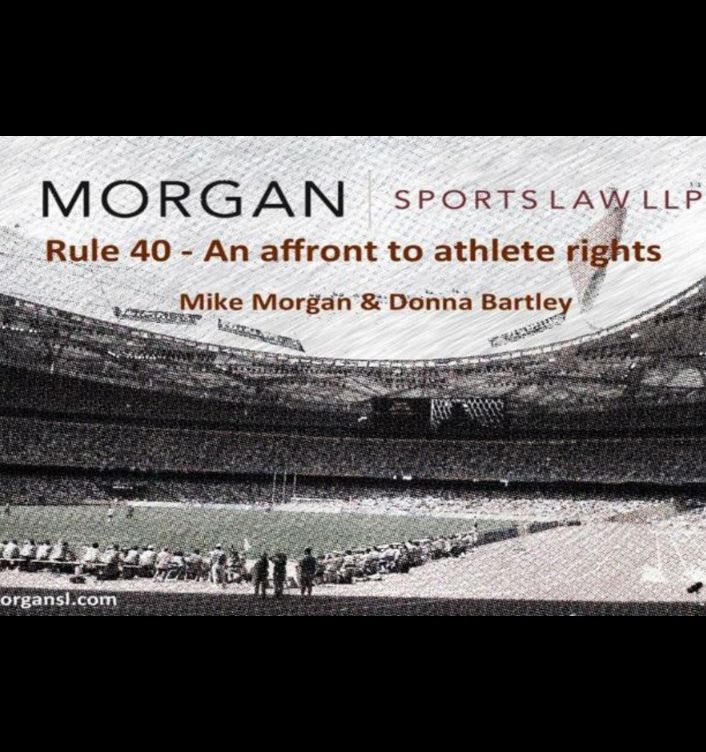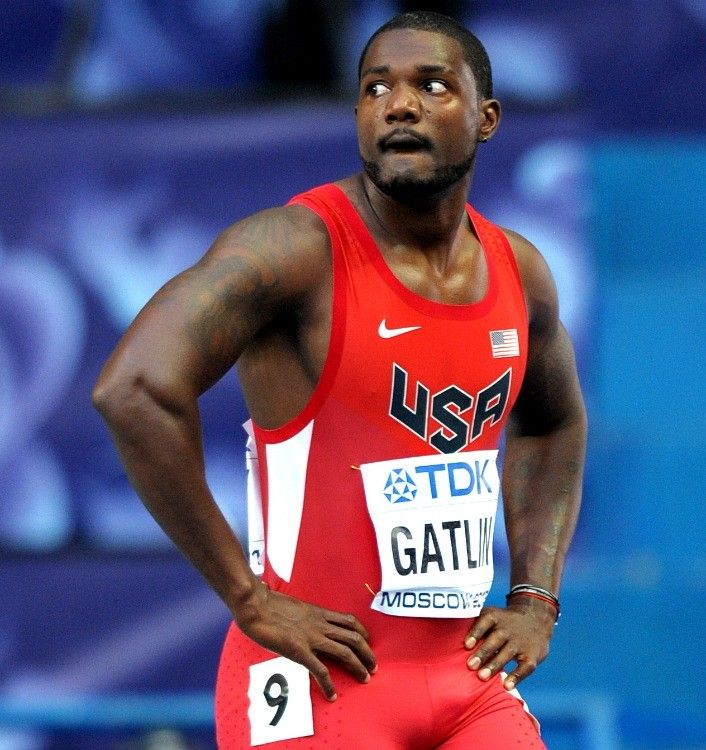Henry Goldschmidt, an associate at Morgan Sports Law, examines the legal elements that will need to be established for an athlete to succeed in a sports-related brain injury claim under the English law of negligence – whether against a governing body, club, medical practitioner, fellow player or referee.
Introduction
In a previous article – “Brain Injuries in Sport: The Invisible Killer” – I looked at the growing concerns around concussion and other forms of traumatic brain injury (“TBI”) in sport, particularly in light of recent medical studies. I cautioned that, if athlete welfare is not given more prominence by governing bodies, it may only be a matter of time before significant sports-related concussion litigation extends beyond North America. The issue then becomes the extent to which English law provides financial safeguards to sportsmen and women who have wrongly suffered TBI.
Athletes who have suffered TBI may be able to recover damages for the physical and psychiatric harm caused (and the subsequent impact on their lives). To succeed in a TBI-related negligence claim there are significant – but by no means insurmountable – legal hurdles that will need to be overcome. Although any case will inevitably turn on particular facts, in short, a claimant must be able to prove that (i) they were owed a duty of care; (ii) there was a breach of that duty; and (iii) the damage suffered was caused by that breach (causation).
Duty of care
In order to establish that a duty of care was owed under English law, there must have been a reasonable foreseeability of the harm being incurred and it must be just and reasonable to impose liability, considering existing precedents and their closest analogies.
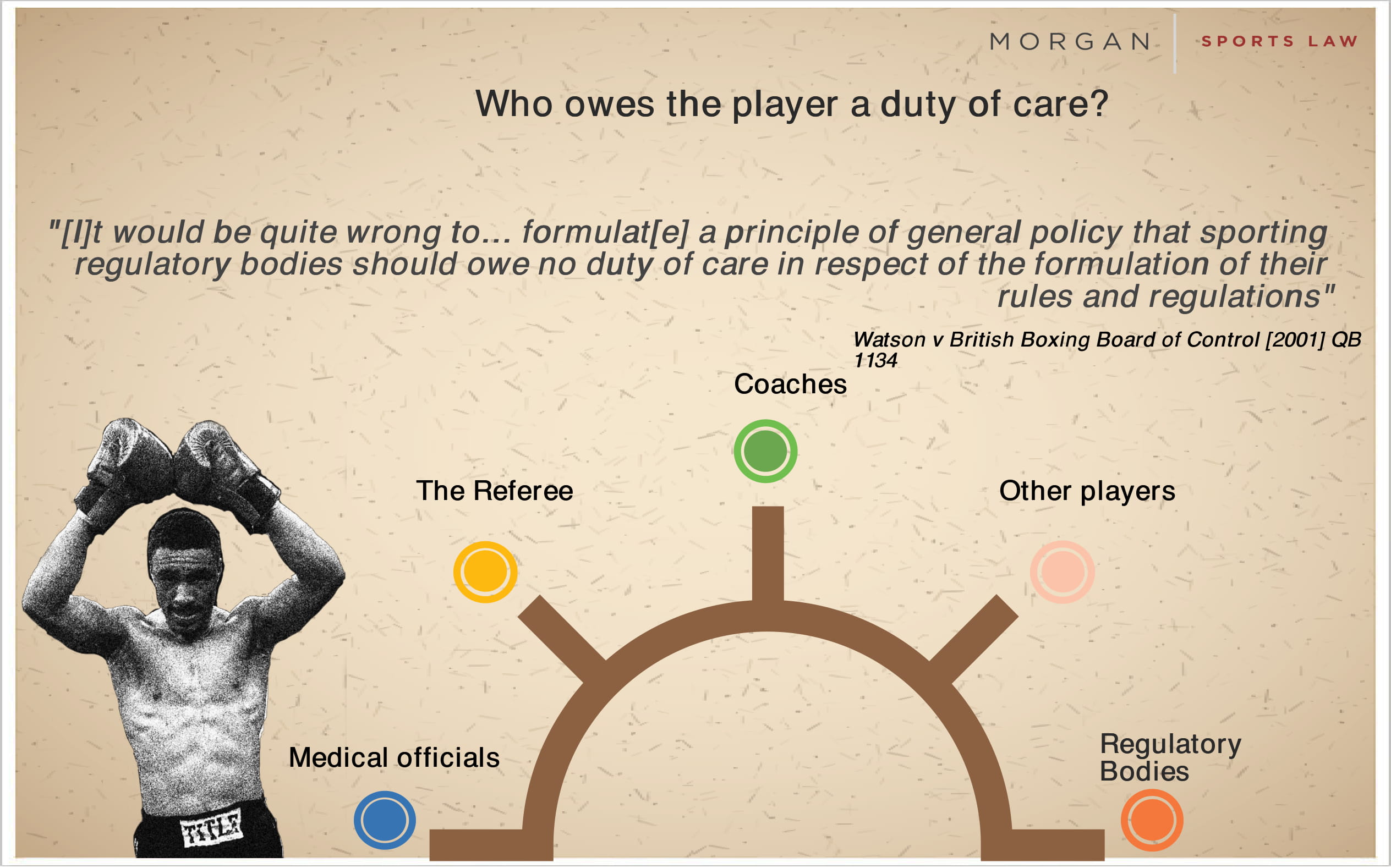 Governing bodies can owe a duty of care to their participants – a precedent that was set in Watson v. British Boxing Board of Control [2001] QB 1134, and reiterated in Wattleworth v. Goodwood Road Racing Company & Others [2004] PIQR P25. In Watson, the English Court of Appeal held that “it would be quite wrong to… formulat[e] a principle of general policy that sporting regulatory bodies should owe no duty of care in respect of the formulation of their rules and regulations.”
Governing bodies can owe a duty of care to their participants – a precedent that was set in Watson v. British Boxing Board of Control [2001] QB 1134, and reiterated in Wattleworth v. Goodwood Road Racing Company & Others [2004] PIQR P25. In Watson, the English Court of Appeal held that “it would be quite wrong to… formulat[e] a principle of general policy that sporting regulatory bodies should owe no duty of care in respect of the formulation of their rules and regulations.”
Whilst the Watson case made clear that consenting to participate was not consent to inadequate safety measures, two Australian rugby cases have suggested that the duty of care should not extend to changing the rules of an inherently dangerous game to minimise injury. In both Australian cases, the court stressed that rugby players take part by their own volition. The common law defence of volenti non fit injuria (also known as “voluntary assumption of risk”) could therefore perhaps be applied to any situation where a player is injured by an aggressive collision – provided it was incidental to the rules of game and not, say, a result of a flagrant assault. However, on the basis of Watson, the volenti defence would be unlikely to stretch to a situation where players are complaining about the quality of the treatment and/or protection that they received in respect of concussion injuries.
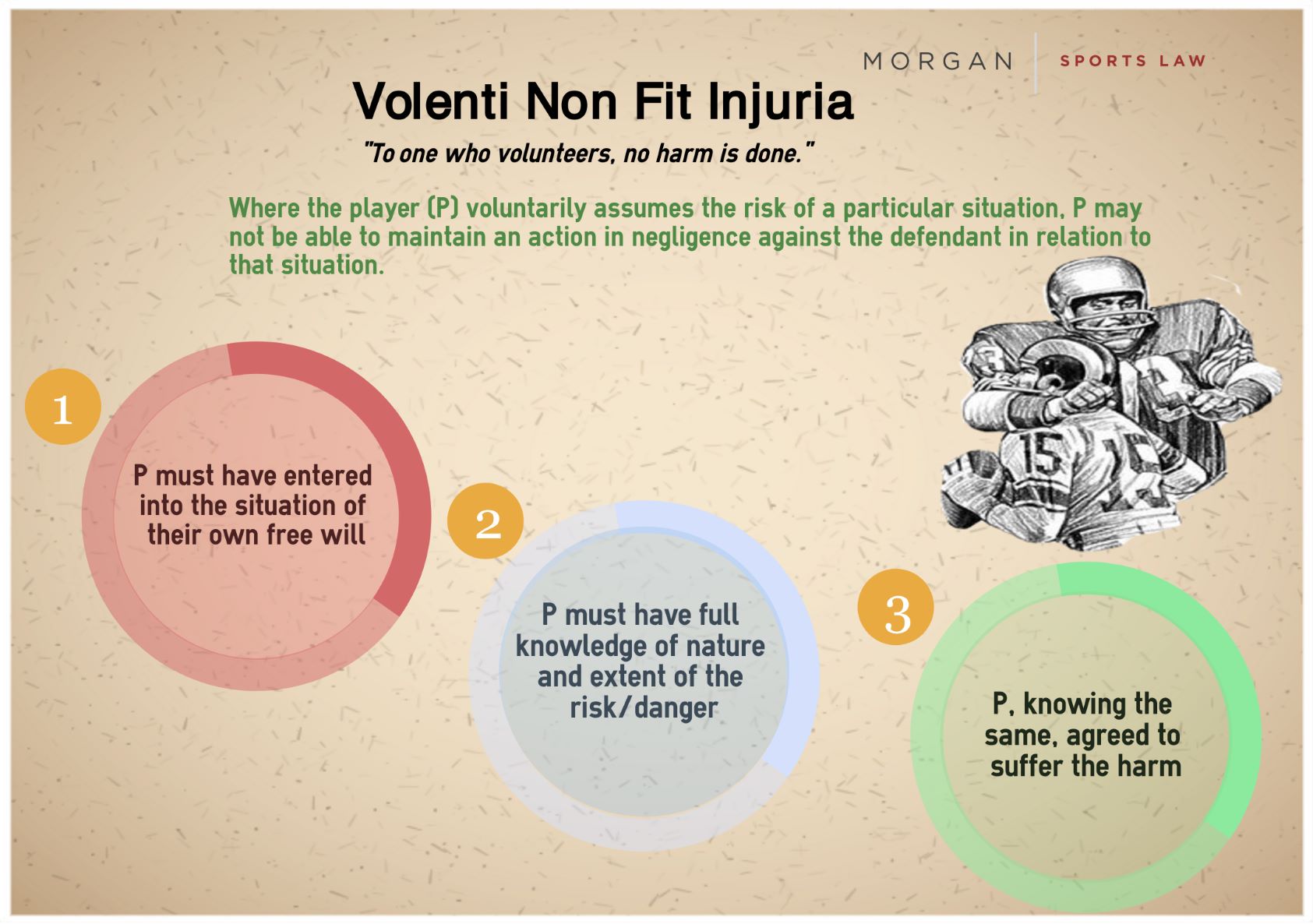 Interestingly, there is an ongoing legal action, also in Australia, between a rugby league player (James McManus) and his former professional club (Newcastle Knights), where the issues of a “dangerous recreational activity” and “voluntary consent” have also been raised. McManus is suing the Knights for damages for “permitting or requiring him to continue to be exposed to traumatic brain injury when they knew the cumulative effect could create a permanent impairment.” Whilst the player says the club “owed a duty to exercise reasonable care to prevent [him] from suffering permanent brain damage”, in its defence, the Knights have argued that there was “an obvious risk” such that they did “not owe [the player] a duty of care to warn [him] of the risk of harm.” The case, shortly to be heard in the New South Wales Supreme Court, could have implications for other common law jurisdictions, such as England and Wales.
Interestingly, there is an ongoing legal action, also in Australia, between a rugby league player (James McManus) and his former professional club (Newcastle Knights), where the issues of a “dangerous recreational activity” and “voluntary consent” have also been raised. McManus is suing the Knights for damages for “permitting or requiring him to continue to be exposed to traumatic brain injury when they knew the cumulative effect could create a permanent impairment.” Whilst the player says the club “owed a duty to exercise reasonable care to prevent [him] from suffering permanent brain damage”, in its defence, the Knights have argued that there was “an obvious risk” such that they did “not owe [the player] a duty of care to warn [him] of the risk of harm.” The case, shortly to be heard in the New South Wales Supreme Court, could have implications for other common law jurisdictions, such as England and Wales.
Breach of duty
Once a duty of care is established, the next element to be established to successfully bring a claim against a governing body will be proving breach of that duty (i.e. fault). The key question is whether a governing body acted unreasonably in light of matters that it knew of, or should have known of, at the particular time that an injury was suffered. What was “reasonable” at the time of the brain injury might be very different to what is deemed “reasonable” in present day due to the ongoing evolution of scientific understanding of concussion injuries.
It will thus be important to establish both (i) the general state of knowledge in the fields of sport and neurology at the relevant time, and (ii) the specific knowledge of a particular defendant if it can be established that it, perhaps as a result of its own research or commissioned reports was in fact aware of relevant “cutting edge” developments. In the NFL class action, for instance, it was alleged that the NFL had deliberately concealed facts it knew about the risks of concussions and long-term brain damage.
The issue of knowledge might also be relevant when determining the damages that a claimant is to be awarded in a successful claim. As awareness of the risk of TBI continues to grow, it may mean that players are increasingly expected to take responsibility for their own well-being. Indeed, section 1 of the Law Reform (Contributory Negligence) Act 1945 states:
“Where any person suffers damage as the result partly of his own fault and partly of the fault of any other person or persons, a claim in respect of that damage shall not be defeated by reason of the fault of the person suffering the damage, but the damages recoverable in respect thereof shall be reduced to such extent as the court thinks just and equitable having regard to the claimant's share in the responsibility for the damage.”
While the governing body, or club, still owes the athlete a duty of care, if the athlete is deemed to have been at fault in some way – perhaps by insisting on playing despite displaying clear signs of concussion and despite being aware of the risks – there may be a reduction in the damages recoverable.
As for potential claims against a player’s club, a team doctor – like any medical professional – will be deemed negligent if he/she has failed to provide a standard of care reasonably expected of someone in the medical profession. If, therefore, a player has suffered injury by virtue of the medical team not properly implementing the existing protocols in place (regardless of whether these were sufficient), this might well be an easier action to bring in terms of establishing a breach of duty. Additionally, as the players’ employers, professional clubs assume responsibility for their welfare.
As for potential claims against fellow sportsmen and women, these are extremely rare. Nevertheless, the English courts have established that players in competitive sports owe a duty – to each other – to take all reasonable care, taking into account the particular circumstances in which the competing players are placed. If one player injures another, either because he failed to exercise the degree of care that was appropriate in the circumstances, or because he acted in a manner to which the other could not have been expected to consent, he could be liable in negligence. The clear implication from the seminal case of Condon v. Basi [1985] 1 WLR 866 is that, in the case of contact sports, it will be difficult to establish liability unless the actions of the defendant are outside the rules of the game. The act must be more than a momentary error of judgment – which the courts have held to be expected on the field of play.
In certain circumstances, those refereeing or otherwise controlling dangerous sports may themselves be liable for any failure to display reasonable competence (if it results in injury to a player) – which includes failure to implement rules designed to protect against injury. The factual context will inform the content of the duty to take reasonable care; for instance, the age of the participants being refereed is to be taken into account when assessing reasonableness. The courts have held that there are clear policy reasons as to why the duty of care extends even to amateur referees – namely that “rarely if ever does the law absolve from any obligation of care a person whose acts or omissions are manifestly capable of causing physical harm…”
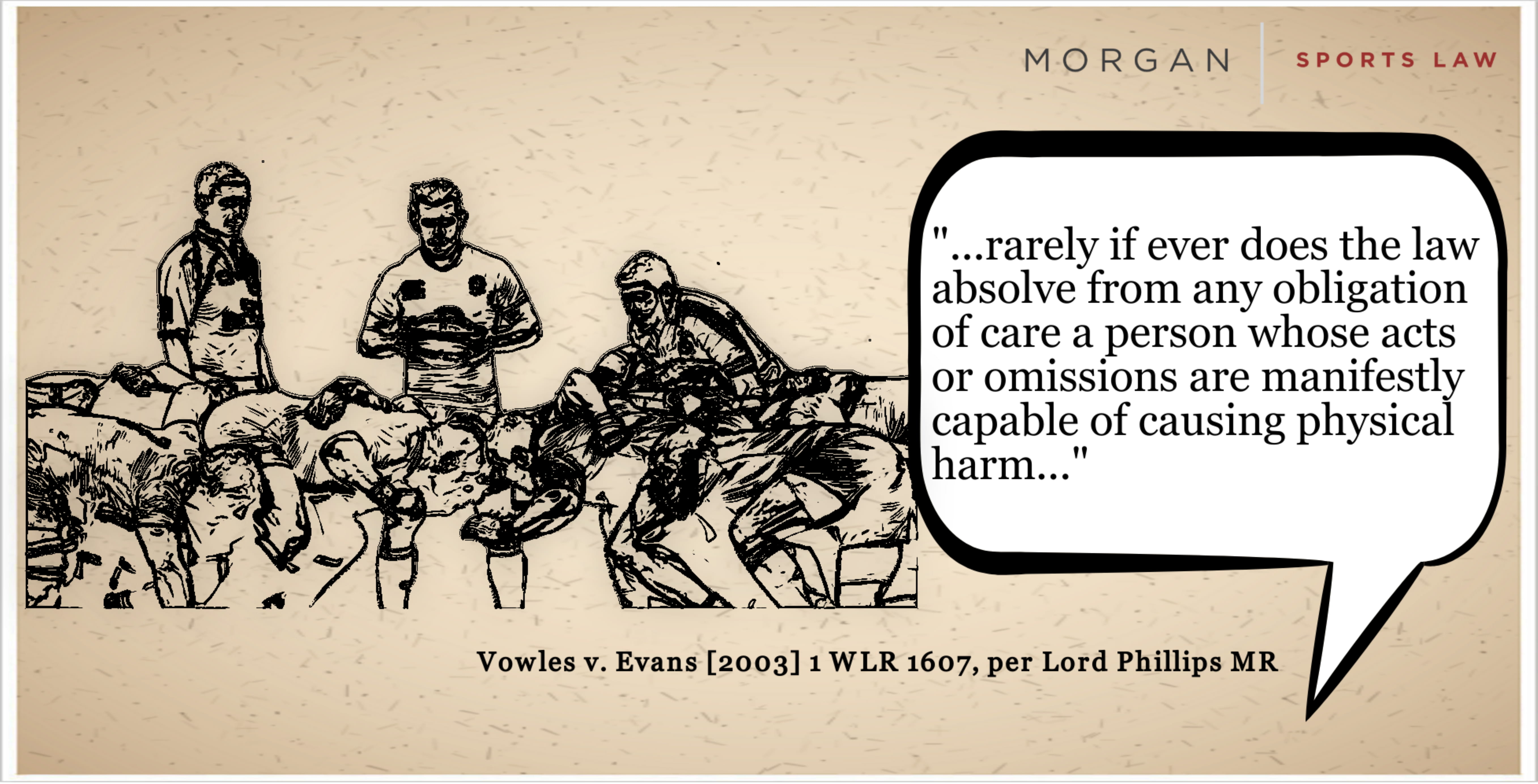 Hypothetically, therefore, if a rugby player was (wrongly) permitted to return to play having “passed” a Head Injury Assessment (“HIA”) and the referee did not re-refer the player for medical assessment despite the player showing clear signs of concussion, the referee could potentially be liable for further injury sustained to that player. That said, referees would likely only be held liable in the clearest cases of incompetence and should take comfort from the fact that, if they know the laws of the game and simply seek to apply them in a reasonable manner, in theory they should have little to worry about.
Hypothetically, therefore, if a rugby player was (wrongly) permitted to return to play having “passed” a Head Injury Assessment (“HIA”) and the referee did not re-refer the player for medical assessment despite the player showing clear signs of concussion, the referee could potentially be liable for further injury sustained to that player. That said, referees would likely only be held liable in the clearest cases of incompetence and should take comfort from the fact that, if they know the laws of the game and simply seek to apply them in a reasonable manner, in theory they should have little to worry about.
Quantum of damage
Before the “chain of causation” falls to be considered, it is important to consider what the “damage” will be in these cases. Where, for instance, a player has been forced to retire because of repeated concussions or second impact syndrome, they may seek “general damages” to compensate for their physical injury – which may include short-term effects like prolonged headaches, and long-term effects such as early onset dementia – as well as any psychiatric harm sustained (such as depression or anxiety). “Special damages” may also be recoverable; that is the consequential losses flowing from the injury, such as loss of earnings (wages, sponsorship, etc) due to early retirement or expenses incurred for medical treatment. Claims may also be brought in the event of the player’s death being caused by a TBI (or CTE), under the Law Reform (Miscellaneous Provisions) Act 1934 and the Fatal Accidents Act 1976.
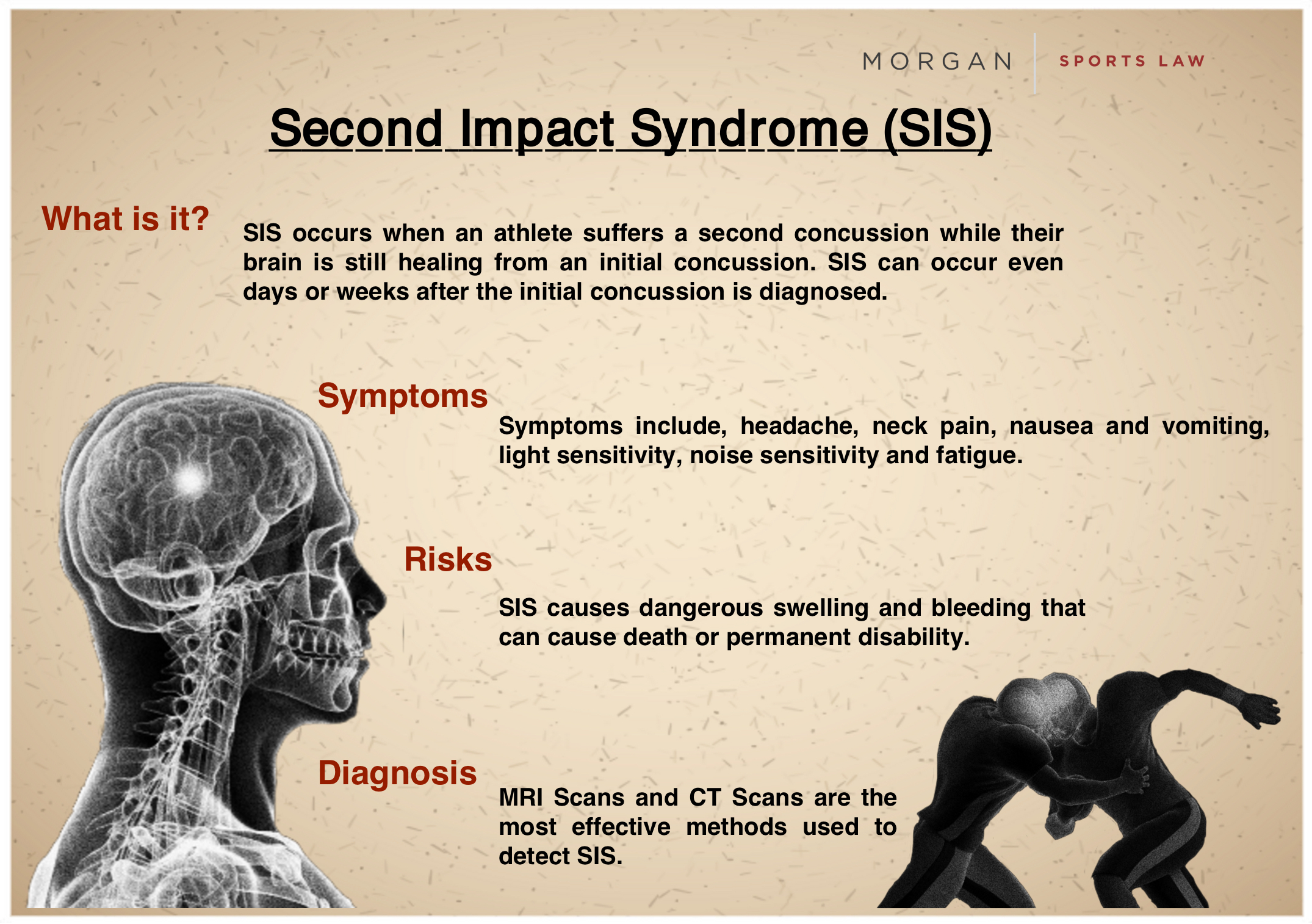 Causation
Causation
When it comes to causation, the claimant must traditionally satisfy two limbs:
(a) Factual causation – but for the defendant’s breach of duty, on the balance of probabilities, the claimant would not have suffered the relevant damage; and
(b) Legal causation – the relevant damage suffered was not too remote a consequence of the defendant’s breach of duty
Factual causation is likely to be a complex issue in concussion cases. To succeed, any claimant sportsperson will have to establish that their symptoms (on which the claim is based) were caused by the relevant sporting activity, and thus that those symptoms, or the severity of those symptoms, would not have otherwise arisen. From an epidemiological perspective, not all those who develop dementia-type illnesses have experienced a sports-related brain injury, in the same way that not everyone who develops lung cancer has smoked. That said, a major study (published in April 2018) warned that suffering a severe concussion in your twenties increases the risk of developing dementia in the next 30 years by more than two thirds. Nevertheless, defendants will likely seek to argue that their breach of duty made no difference to the claimant’s eventual outcome – an argument that the British Boxing Board of Control ran unsuccessfully in the Watson case.
English case law has developed, with various twists and turns, in the problematic field of factual causation. Whilst the “but for” test is generally the starting point, the courts have, on occasion, been willing to apply more relaxed/pragmatic alternatives, which may assist prospective claimants. The case of Bailey v. The Ministry of Defence [2009] 1 WLR 1052 considered a scenario in which it was beyond the scope of current medical science to conclude for certain what would have occurred but for the relevant breach of duty. The Court of Appeal ruled that the material increase in risk that resulted from the defendant’s breach of duty amounted to a sufficient causal connection for liability in negligence to be established:
“If the evidence demonstrates that 'but for' the contribution of the tortious cause the injury would probably not have occurred, the claimant will (obviously) have discharged the burden. In a case where medical science cannot establish the probability that 'but for' an act of negligence the injury would not have happened but can establish that the contribution of the negligent cause was more than negligible, the 'but for' test is modified, and the claimant will succeed.”
In the Privy Council case of Williams v. Bermuda Hospitals [2016] 2 WLR. 774, it was suggested, obiter, that the analysis of the Court of Appeal in Bailey was wrong:
“The Board does not share the view of the Court of Appeal that the case involved a departure from the “but for” test. The judge concluded that the totality of the claimant's weakened condition caused the harm. If so, “but for” causation was established.”
Lord Toulson’s analysis has itself been doubted academically. Although this area of the law might seem a little unsettled, the general feeling is that the judgment in Williams in fact confirms the application of the “material contribution” test – regardless of the, perhaps merely semantic, issue whether such application amounts to a departure from the “but for” test.
Difficulties in diagnosing brain injury and competing medical theories as to what causes CTE, dementia, etc could well prove to be obstacles that claimants will have to overcome – but not necessarily insurmountable ones. In terms of satisfying the “damage” requirement, some scientists consider that there are now diagnostic tests – such as imaging biomarkers in tauopathies and transcranial magnetic stimulation – that are able to screen for concussive brain damage whilst the person is alive. Meanwhile, in February 2018, the U.S. Food & Drug Administration authorised the marketing of the first blood test – the Banyan Brain Trauma Indicator – to detect concussion by measuring brain-specific proteins that appear in the blood within 12 hours of a TBI occurring. A saliva test has also been trialled in English rugby’s top two professional divisions and there are studies which suggest it could be useful in identifying the severity of a concussion, particularly in children.
Notwithstanding these developments, it is fair to say that scientific and medical knowledge in this complex area is still developing. That being so, there remains plenty of room for argument, on both sides of any sports-related TBI claim.
Limitation
Under English law, any claim for personal injury must be brought within three years of the date when the cause of action accrued or (if later) within three years of the date of knowledge of the injury. This will likely be a defence that defendant(s) in concussion-related claims will raise, as with defendants in industrial disease cases. Given that the effects of concussion injuries can be hidden for years, there will inevitably be a focus on “date of knowledge”. As such, documents such as historic medical records and any efforts made by clubs/governing bodies to alert players to potential risks may well be relevant when determining the relevant date of knowledge.
Arguably it would be difficult for a claimant to spot signs of dementia/CTE. This is not dissimilar, for instance, to factory workers finding it tricky to attribute noise-induced hearing loss (“NIHL”) to a loud workplace as opposed to other factors (e.g. advancing age). In NIHL or asbestos (mesothelioma) cases, there will often be a preliminary trial on the issue of limitation alone, which may well be the way that the courts would choose to deal with concussion-induced personal injury claims in which a limitation defence has been raised.
Discussion
The concussion-related litigation in North America will surely ensure that governing bodies and clubs around the world (and their insurers) are nervously looking over their shoulders.
A claimant bringing a sports-related TBI claim under the English law of negligence will invariably have hurdles to clear if their claim is to succeed. The passage of time and the varying levels of scientific knowledge might make success in historic claims more difficult, whilst more recent claims may be more susceptible to findings of volenti or contributory negligence as the players themselves become more aware of the dangers. Regarding causation, it is difficult to predict if a court would be willing to apply the doctrine of “material contribution” to a sports-related TBI case, though the trend in the English courts seems to favour the claimants.
In the face of increasingly robust scientific evidence about the long-term effects of concussion (rather than mere conjecture), governing bodies, clubs and anyone else responsible for the health and safety of players must adopt an evidence-based approach to protect not only the wellbeing of their athletes, but also themselves from the risk of litigation.
The medico-legal framework in this complex area is set for a potentially defining – and unpredictable – few years.
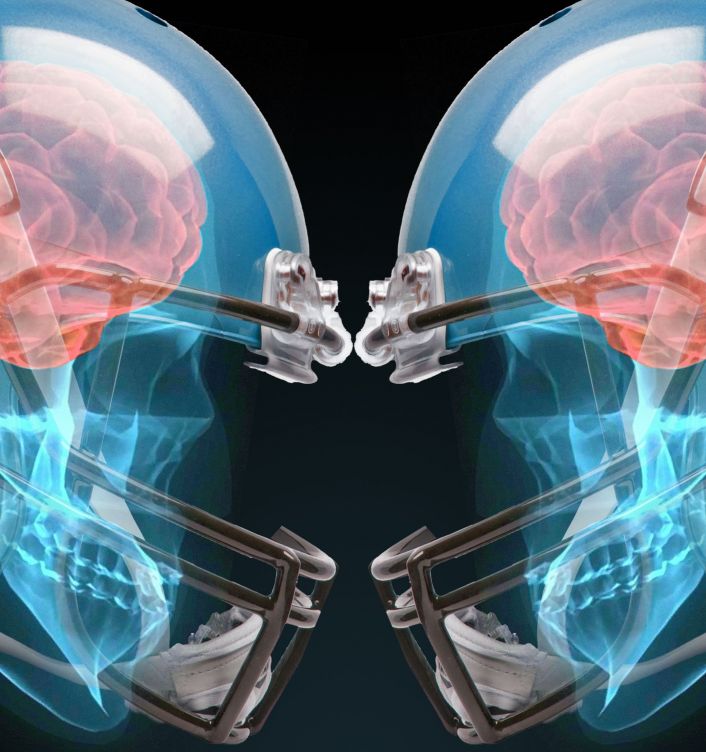



 Governing bodies can owe a duty of care to their participants – a precedent that was set in
Governing bodies can owe a duty of care to their participants – a precedent that was set in 
 Hypothetically, therefore, if a rugby player was (wrongly) permitted to return to play having “passed” a
Hypothetically, therefore, if a rugby player was (wrongly) permitted to return to play having “passed” a  Causation
Causation